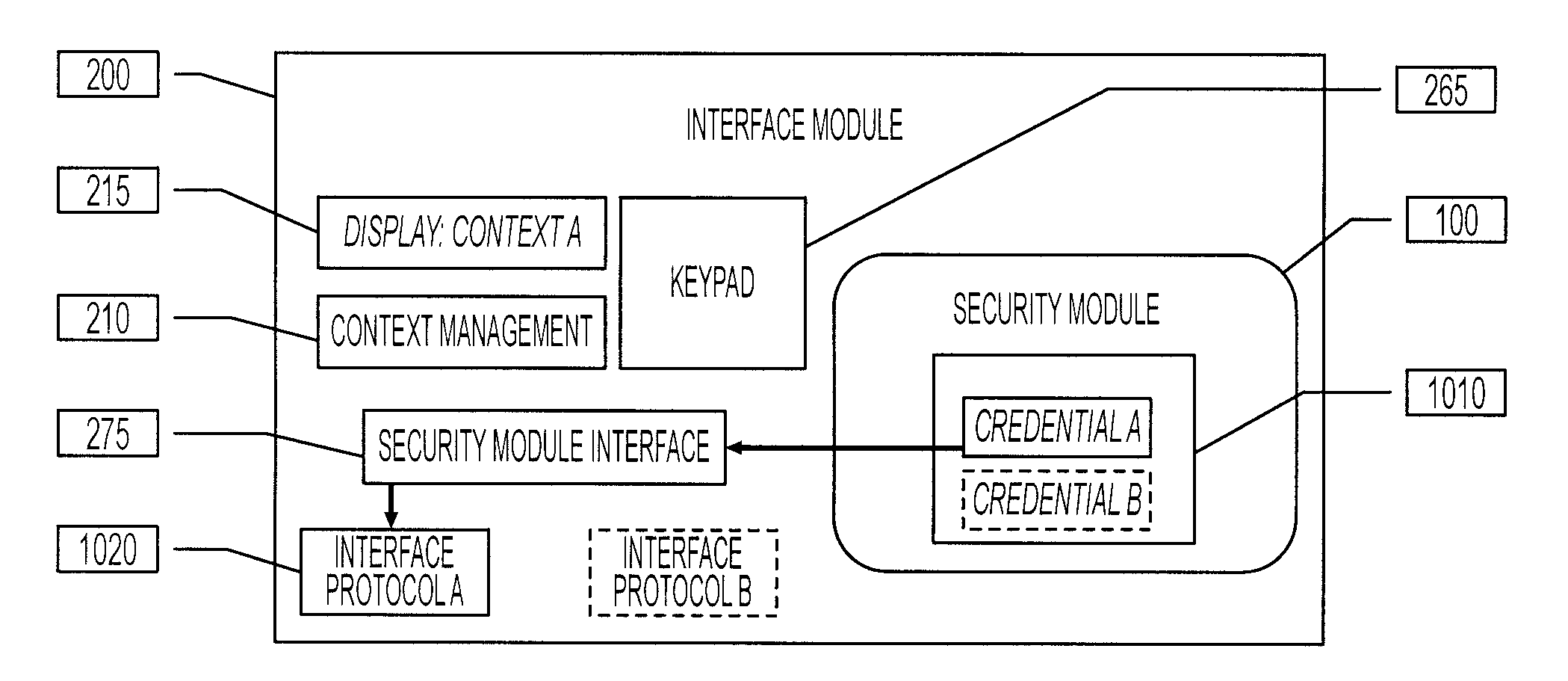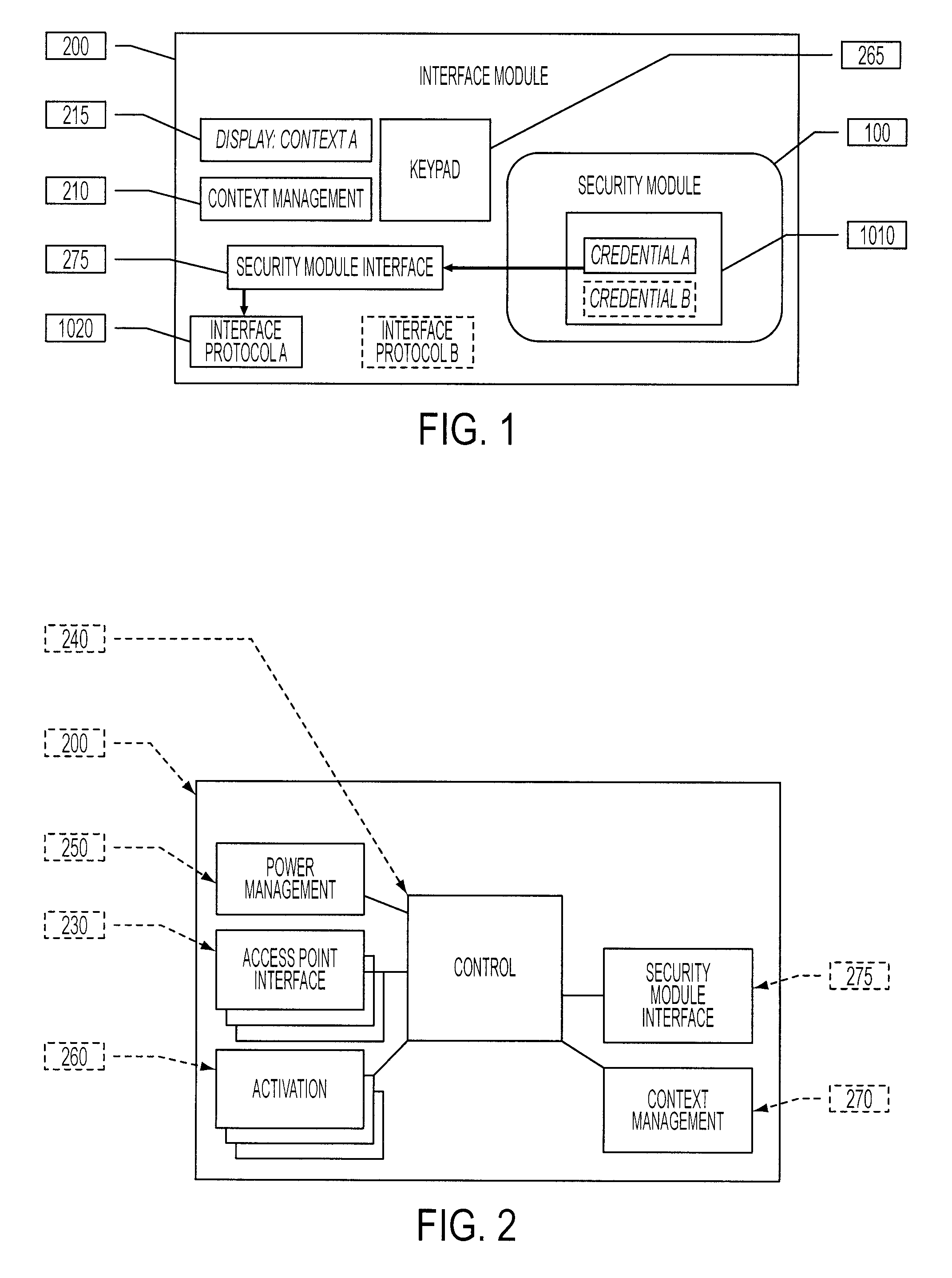Configurable digital badge holder
a digital badge and configurable technology, applied in the field of physical access authentication systems and methods, can solve the problems of increasing the average number of lost or vulnerable cards, limiting the use of proximity contactless cards, and reducing the efficiency of solution, so as to reduce the overhead cost of purchasing, tracking and maintenance, and improve security. the effect of
- Summary
- Abstract
- Description
- Claims
- Application Information
AI Technical Summary
Benefits of technology
Problems solved by technology
Method used
Image
Examples
Embodiment Construction
[0040]The system of the invention as illustrated in FIG. 1 comprises a security module (100) and an interface module (200).
[0041]Generally speaking, the security module (100) comprises at least the functions of storage of user credentials.
[0042]The security module (100) optionally includes:[0043]Protected user authentication function, for instance PIN Validation. The authentication function should be implemented and enforced on the security module[0044]Protected external authentication function, for instance challenge / response based on a secret key stored in the security module. The authentication function should be implemented and enforced on the security module[0045]Protection of user credentials. The user credentials should only be accessible for use after the user or interface module has been authenticated.
[0046]The interface module is generally comprised of a portable device body (200) and a microcontroller with power management and memory to control execution of its functions....
PUM
 Login to View More
Login to View More Abstract
Description
Claims
Application Information
 Login to View More
Login to View More - R&D
- Intellectual Property
- Life Sciences
- Materials
- Tech Scout
- Unparalleled Data Quality
- Higher Quality Content
- 60% Fewer Hallucinations
Browse by: Latest US Patents, China's latest patents, Technical Efficacy Thesaurus, Application Domain, Technology Topic, Popular Technical Reports.
© 2025 PatSnap. All rights reserved.Legal|Privacy policy|Modern Slavery Act Transparency Statement|Sitemap|About US| Contact US: help@patsnap.com



